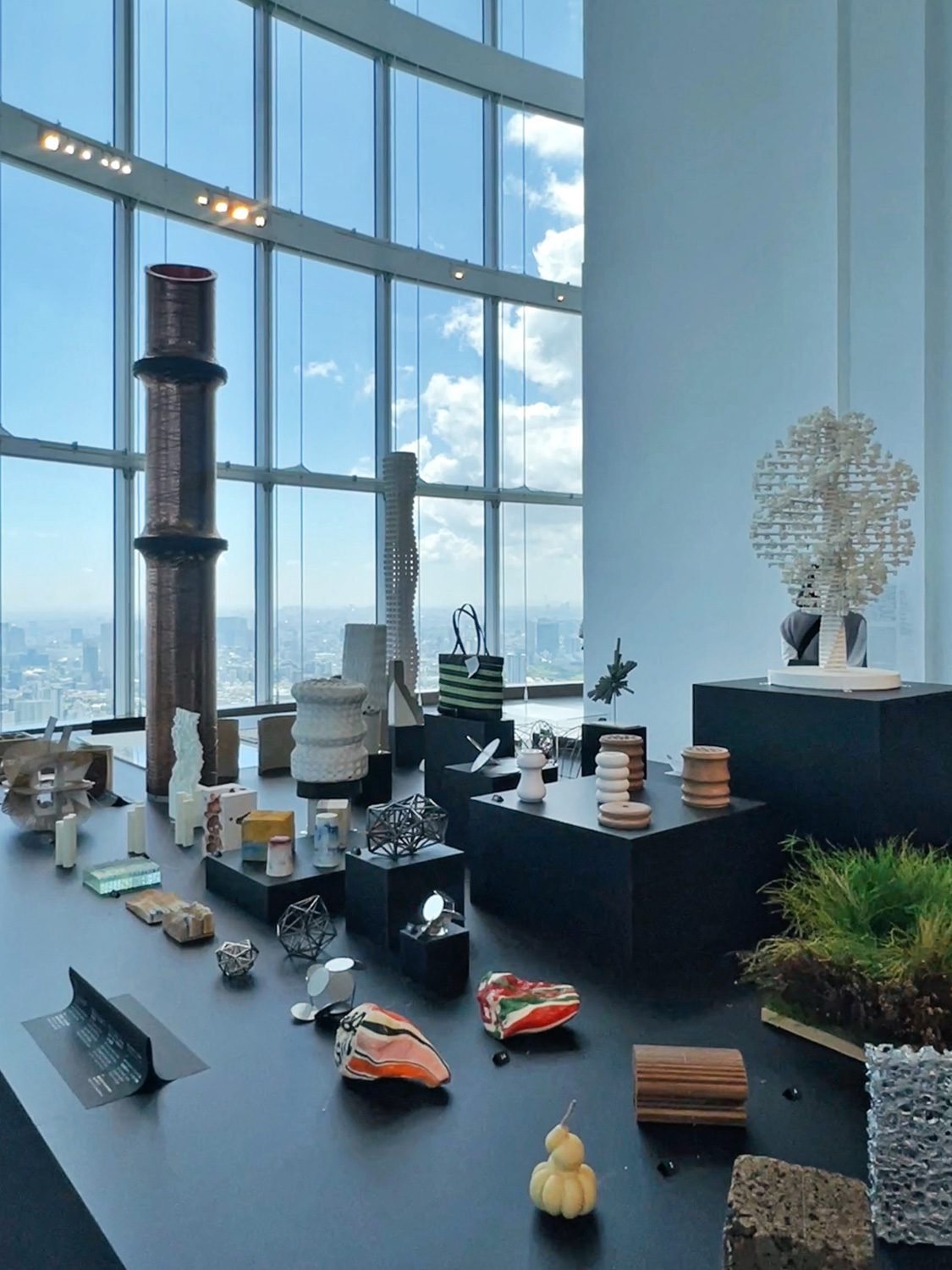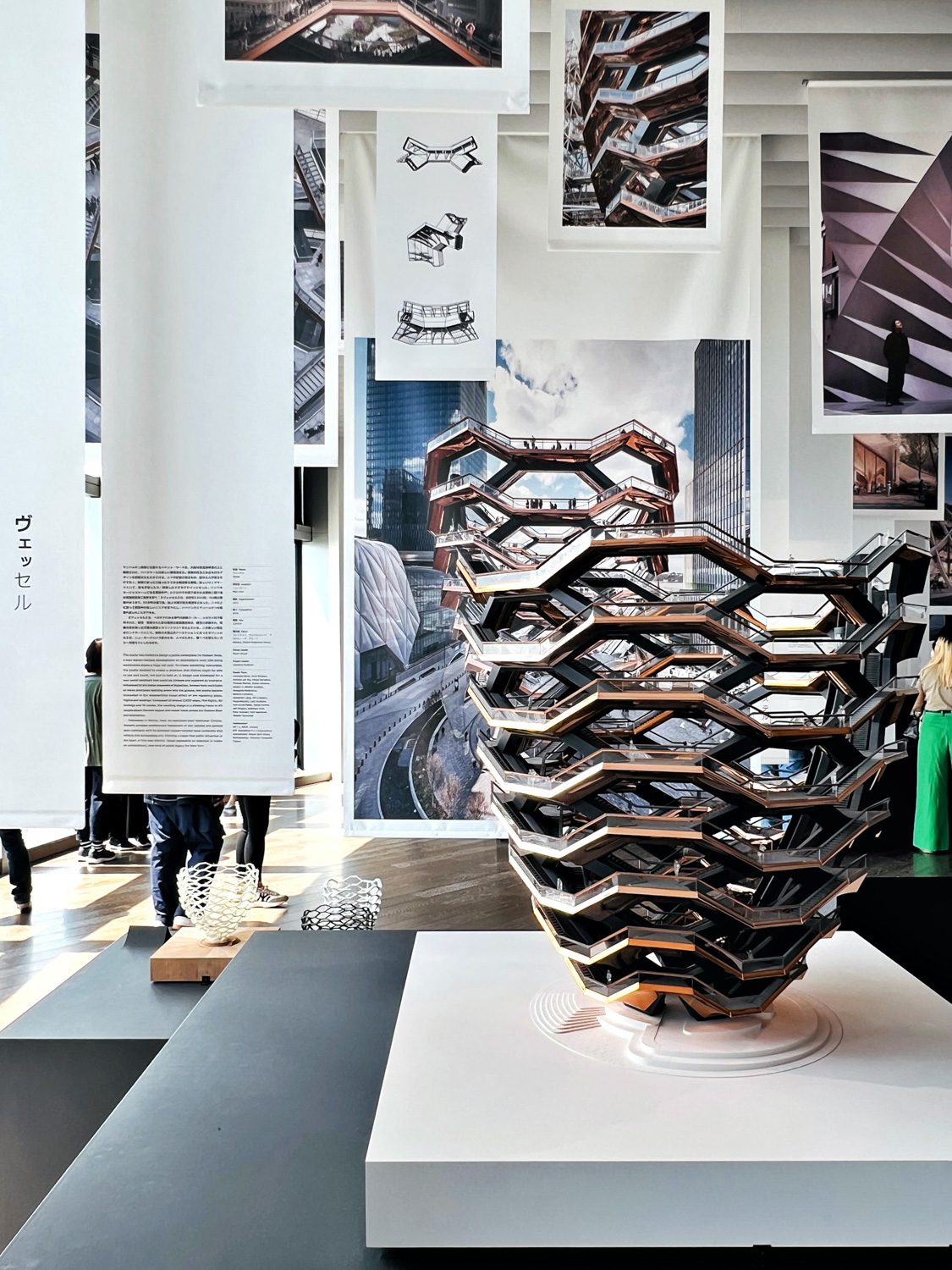EXPLORE THE ‘SOULFULNESS AND HUMANNESS’ OF THE UK DESIGN STUDIO ‘HEATHERWICK STUDIO’ IN THEIR LATEST EXHIBITION AT MORI ART MUSEUM IN JAPAN
TEXT & PHOTO: THANAPORN LOHAVICHITRANON
(For Thai, press here)
Many people recognize and remember Heatherwick Studio from the design of the UK Pavilion at the World Expo 2010 in Shanghai. Several other projects by this London-based design practice that followed have sparked great excitement and interest in the architectural industry due to their use of unique concepts, images, and visuals, as well as technologically advanced construction materials and techniques. Heatherwick Studio’s first project in Japan, ‘Azabudai Hills / Lower Levels,’ a landscape renovation project in the Toranomon-Azabudai area of Tokyo, will be completed and officially open in the middle of 2023. Mori Building, Tokyo’s prominent real-estate development company, owns the project and a large number of other mega projects in Japan, including the Mori Art Museum, one of Tokyo’s most famous museums that all designers are familiar with.
In a country like Japan, where there are many globally renowned local architects, having a foreign architecture studio in charge of such a large-scale project prompted discussions among designers and the general public about what kind of ‘colors’ the British design firm would bring to Tokyo and how different such “colors” would be. Mori puts together the exhibition in order for it to serve as an introduction for the people of Tokyo to learn more about the principal architect of the project, which will likely become another popular addition to the city’s urban space, before the reveal of the actual building in a few months.
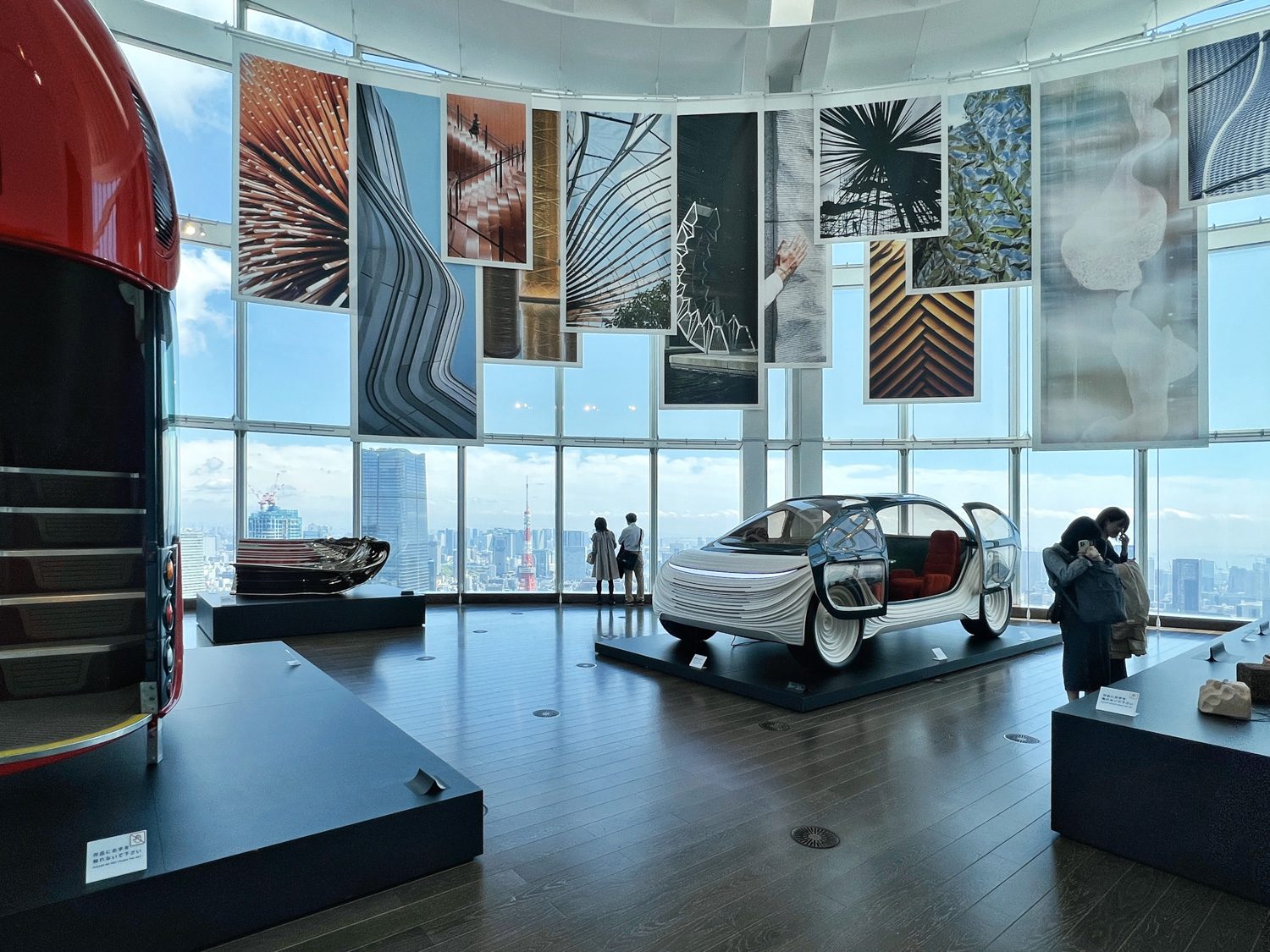
The exhibition’s way of telling the story of Heatherwick Studio through a Japanese lens is one of its most intriguing aspects. Since the majority of people’s impression of the British studio is their body of work, which consists of projects with unique, striking visuals, telling their story within the Japanese context, where there is a predominance of familiarity with humble, minimalist aesthetics when it comes to design, and the significance given to the connection between people’s lives and locality, appears a bit contradictory. Nonetheless, it helps to explain the exhibition’s title, “Heatherwick Studio: Building Soulfulness,” as well as the main narrative, where the story of the studio is told from the perspective of its “soulfulness and humanness.” These two things sit at the heart of Thomas Heatherwick’s design philosophy, driving the processes of studying and researching, going through trials and errors, and developing, all of which have contributed to the conceptualization and materialization of his iconic, globally recognized designs.
The “Intro” part of the exhibition introduces viewers to Thomas Heatherwick, the studio’s founder, from his student days to the present day. It depicts the architect’s diverse interests, which stem from his family’s backgrounds in textile design and jewelry trading to his college education in 3-Dimensional Design and Furniture Design, which later expanded his interest in experiments and the study of varying characteristics, identities, and limitations of materials. In this part, stories are told through mock-ups, collectible collections, and a number of sketches from which his iconic works, ranging from small-scale products to furniture, cars, and architecture, were born.
The following section of the exhibition features 22 projects by Heatherwick Studio, divided into 6 sessions based on topics, each of which presents the concept of “soulfulness and humanness” in varying dimensions.

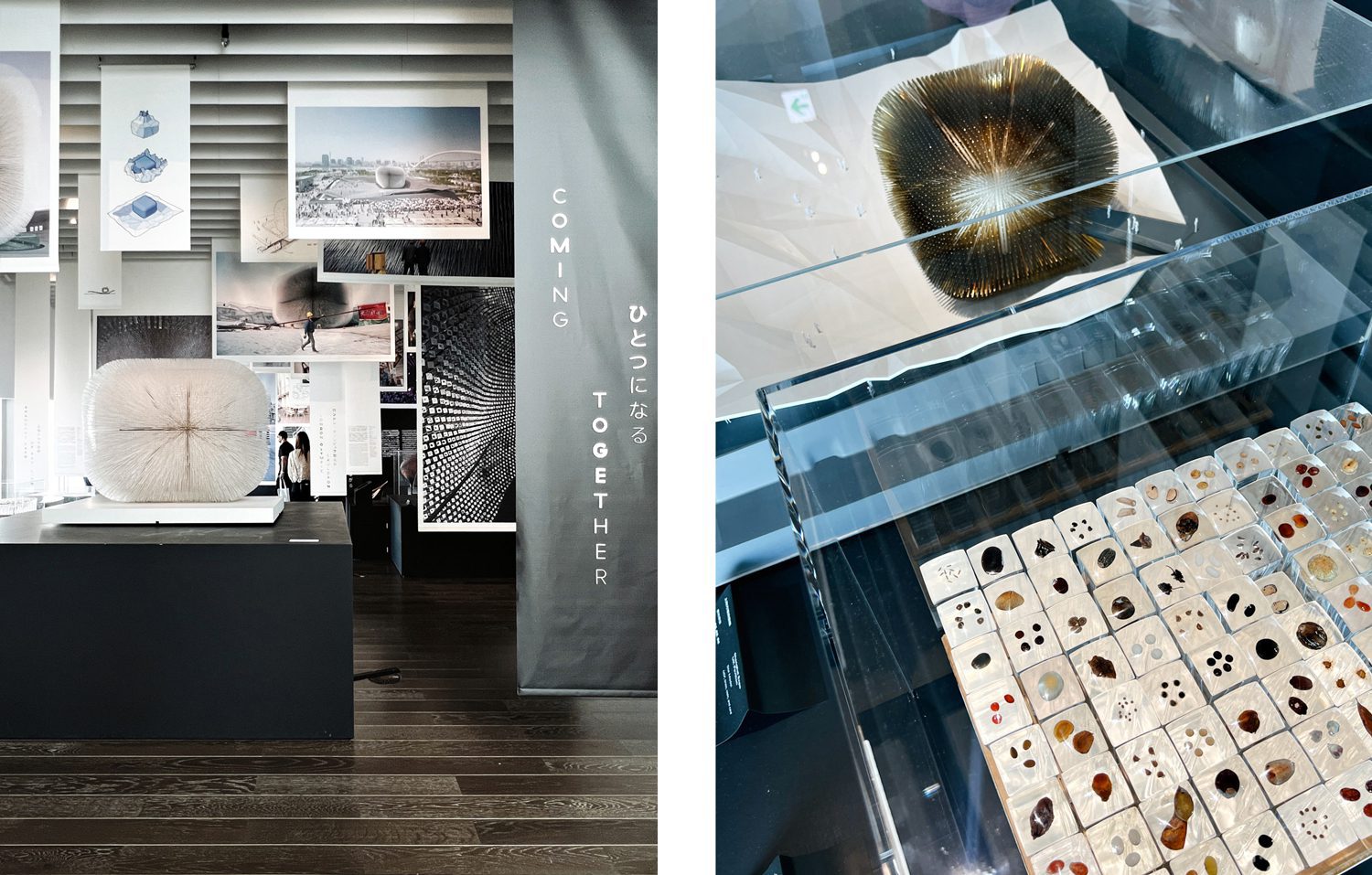
“Coming Together” is the first session of the six. The projects shown in this session illustrate the concept of how smaller elements and units interact to form a unified whole, such as the design of the UK Pavilion at the World Expo in 2010. The pavilion, remembered for its spectacular facade, made up of over 60,000 clear acrylic spikes containing various types of seeds and representing England’s pioneering role in the Urban Parks and Garden concept, was awarded the Expo’s top prize. Another project is the design of the Olympic Cauldron for the 2012 London Olympics, which consists of 204 copper petals representing the 204 competing nations.

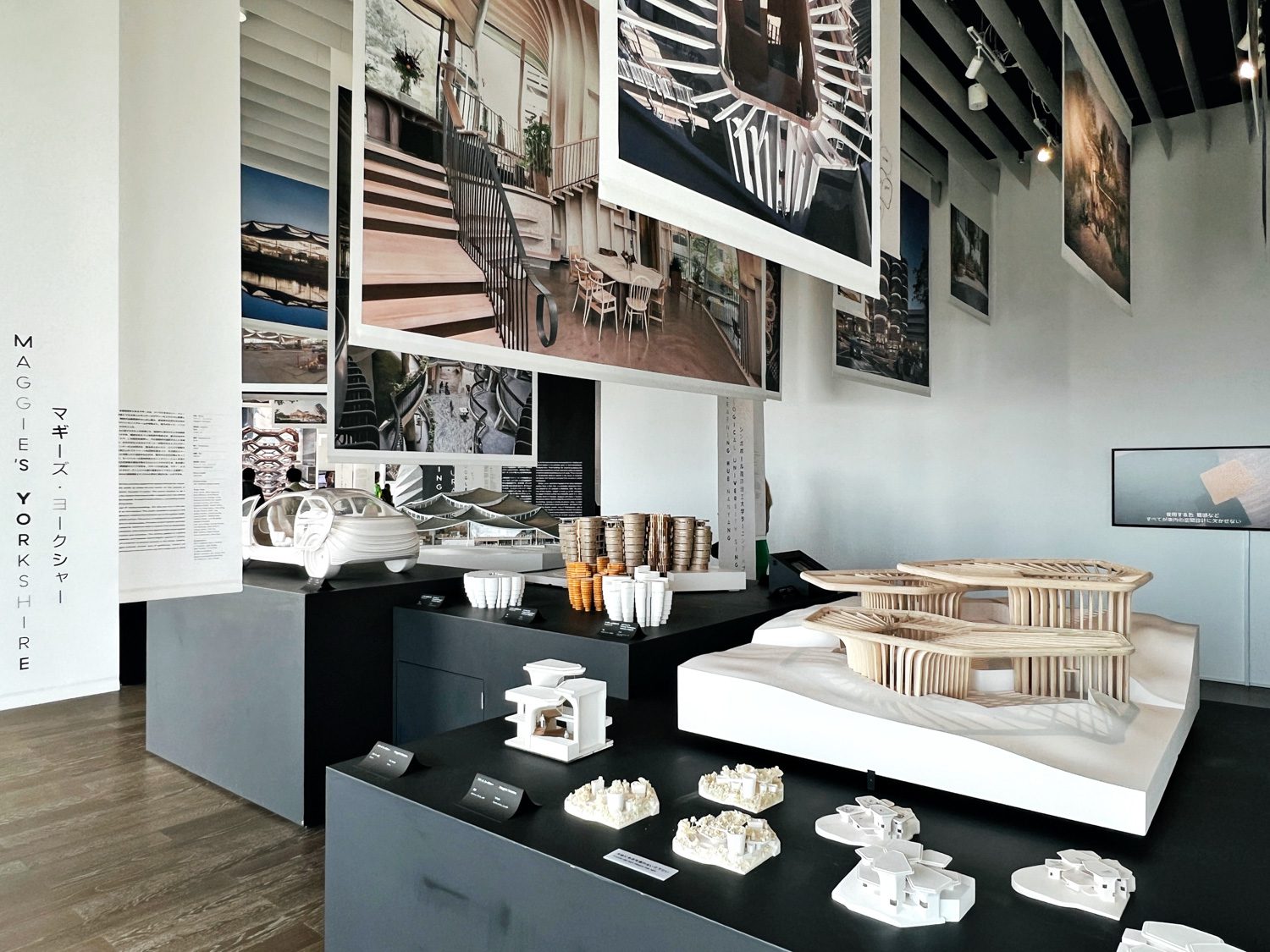
“Connecting with Everyone” refers to works that reflect relationships between humans and places/cities, such as London’s public bus, which goes beyond the redesigning of the bus’s physical appearance to include the improvement of the layout that takes into account traffic and the functions of the city bus.
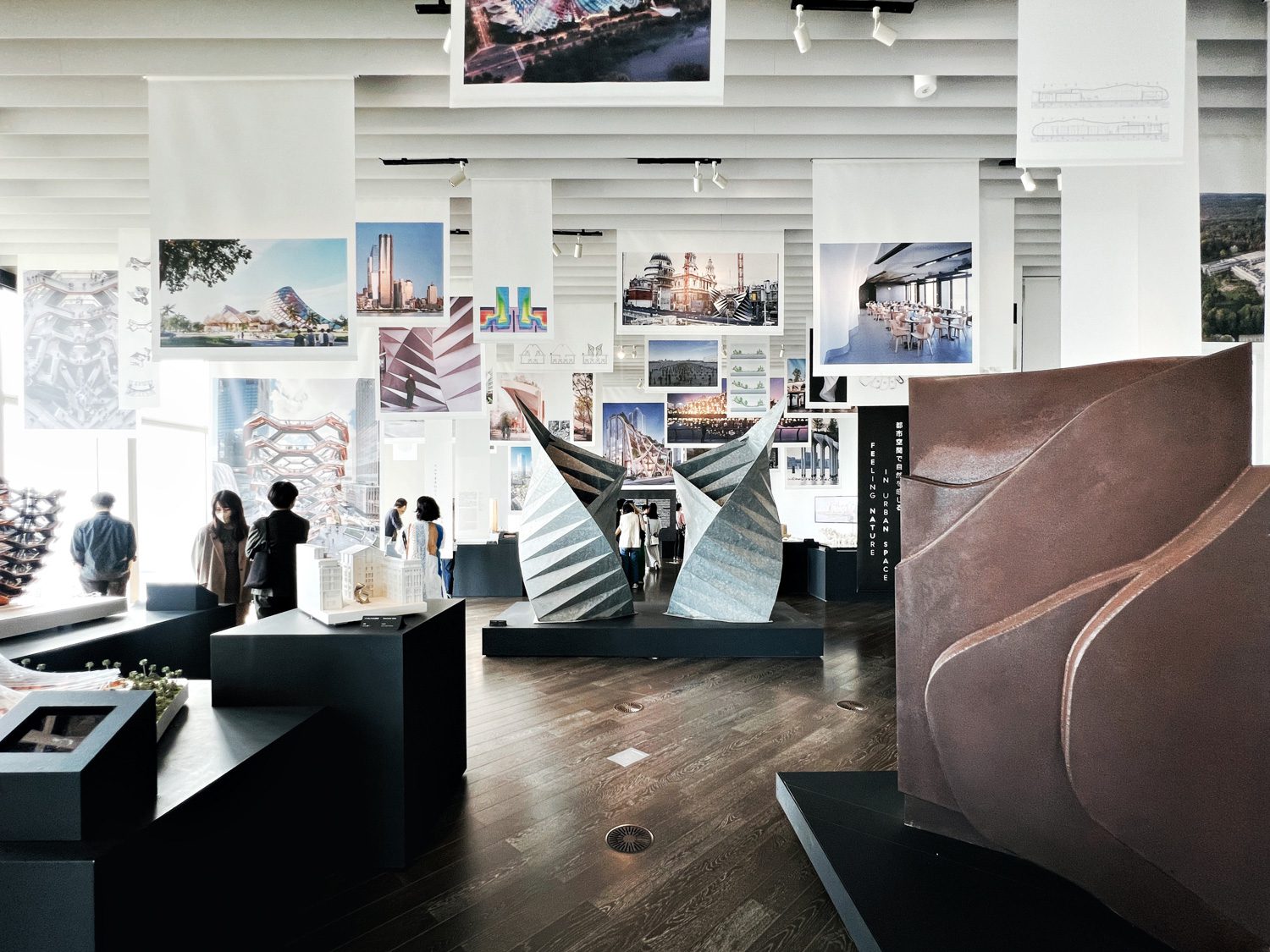
“Experiencing Sculptural Space” is a collection of projects whose sculptural characteristics leave lasting impressions and strengthen the public’s recognition of Heatherwick Studio. The most well-known project in this session is Vessel in Manhattan, whose architectural style draws inspiration from ancient Indian stepwells. This section of the exhibition also features Paternoster Vents, the underground vent/design sculpture near St. Paul’s Cathedral that takes inspiration from the paper folding art of origami.
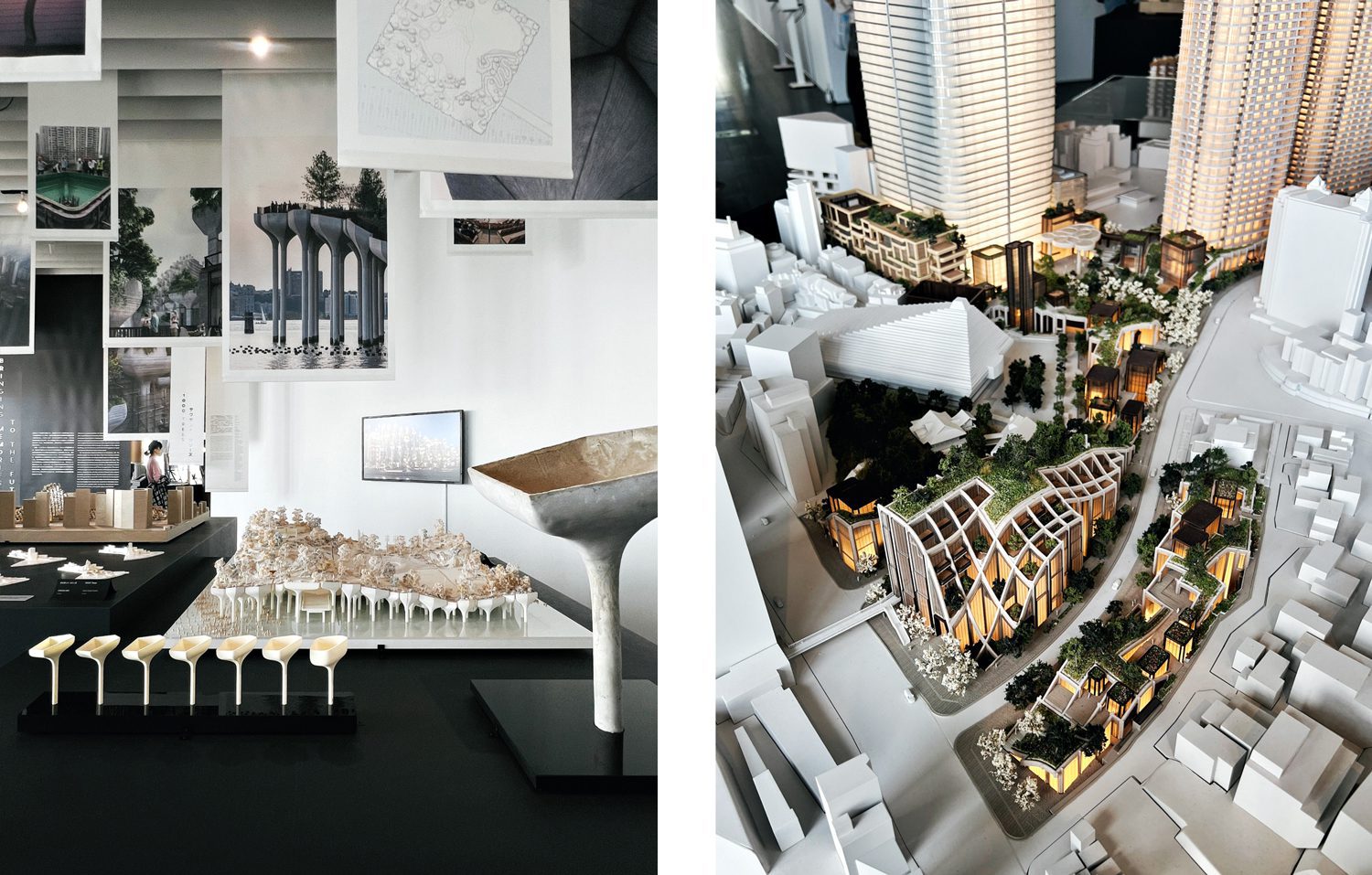
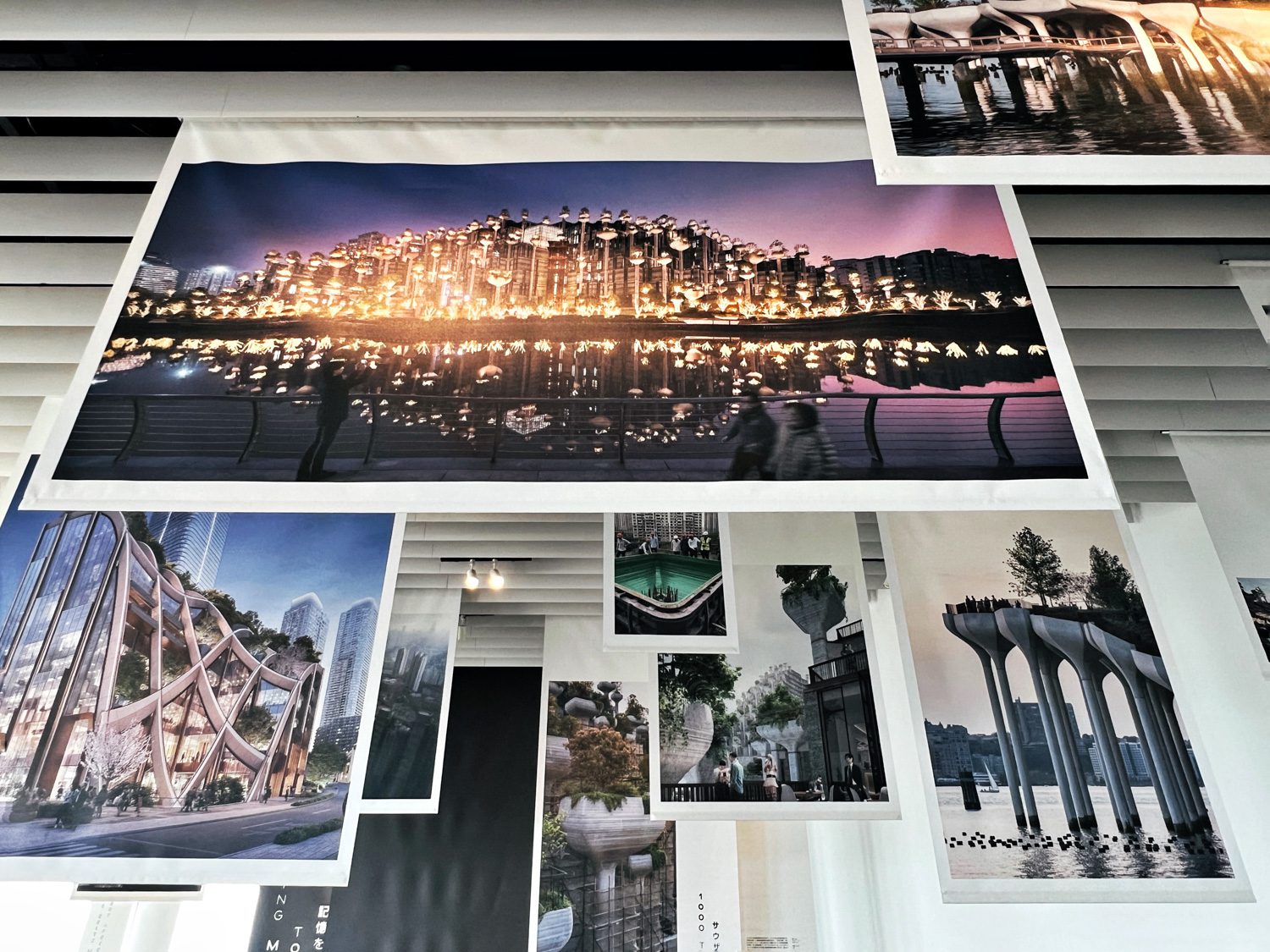
“Feeling Nature in Urban Space” brings together works that reflect the connection between humans and nature on an urban scale, such as Little Island in Manhattan, which was completed in 2021. Included in this session is the soon-to-open Azadudai Hills/ Lower Levels, whose design utilizes the site’s hilly landscape to facilitate a relationship between the architecture and urban space, along with the creation of urban green space.

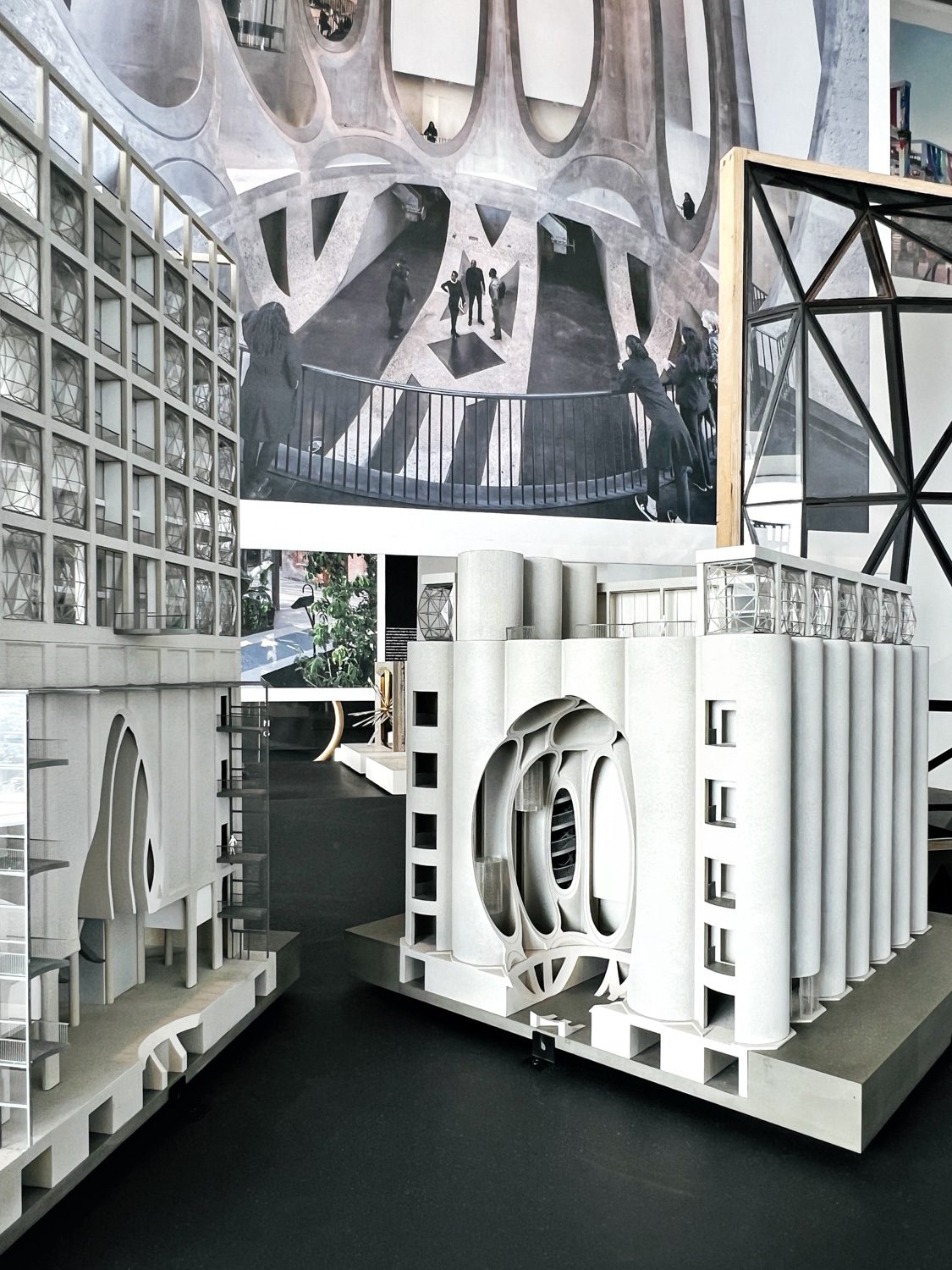
“Bringing Memories to the Future” is a collection of works that pay homage to the spirits and narratives of architectural creations of the past by reintroducing those narratives using contemporary design language and interpretations. Among the projects presented in this session are the Bombay Sapphire Distillery and the renovation of a Cape Town historical building into the Zeitz Museum of Contemporary Art Africa, in which the building’s original appearance and structure were almost entirely preserved. With this project, Heatherwick Studio chose to enlarge the building’s primary open space to accentuate its aesthetic and structural qualities.

The final zone, “Playing and Using,” displays the studio’s product design and furniture design projects. Highlights include two of the studio’s most iconic designs: the Friction Table, a round table that can be expanded into a long, oval shape, and Spun, a chair that can be rotated 360 degrees with the unique form designed with proportions of the human body as reference. In addition to displaying the actual Spun chairs, the exhibition welcomes visitors to sit and personally experience them.
Despite the fact that the exhibition is divided into six sessions, viewers are able to recognize that each work contains multiple dimensions that also seem to link to other sessions. The categorization helps us viewers comprehend the overall design concept and all the components of which each work is comprised. All in all, this is an extensive exhibition with video presentations, study modes, and mock-up models created and used for the studio’s various work processes. It is one of those exhibitions that is jam-packed with information, content, and actual works.
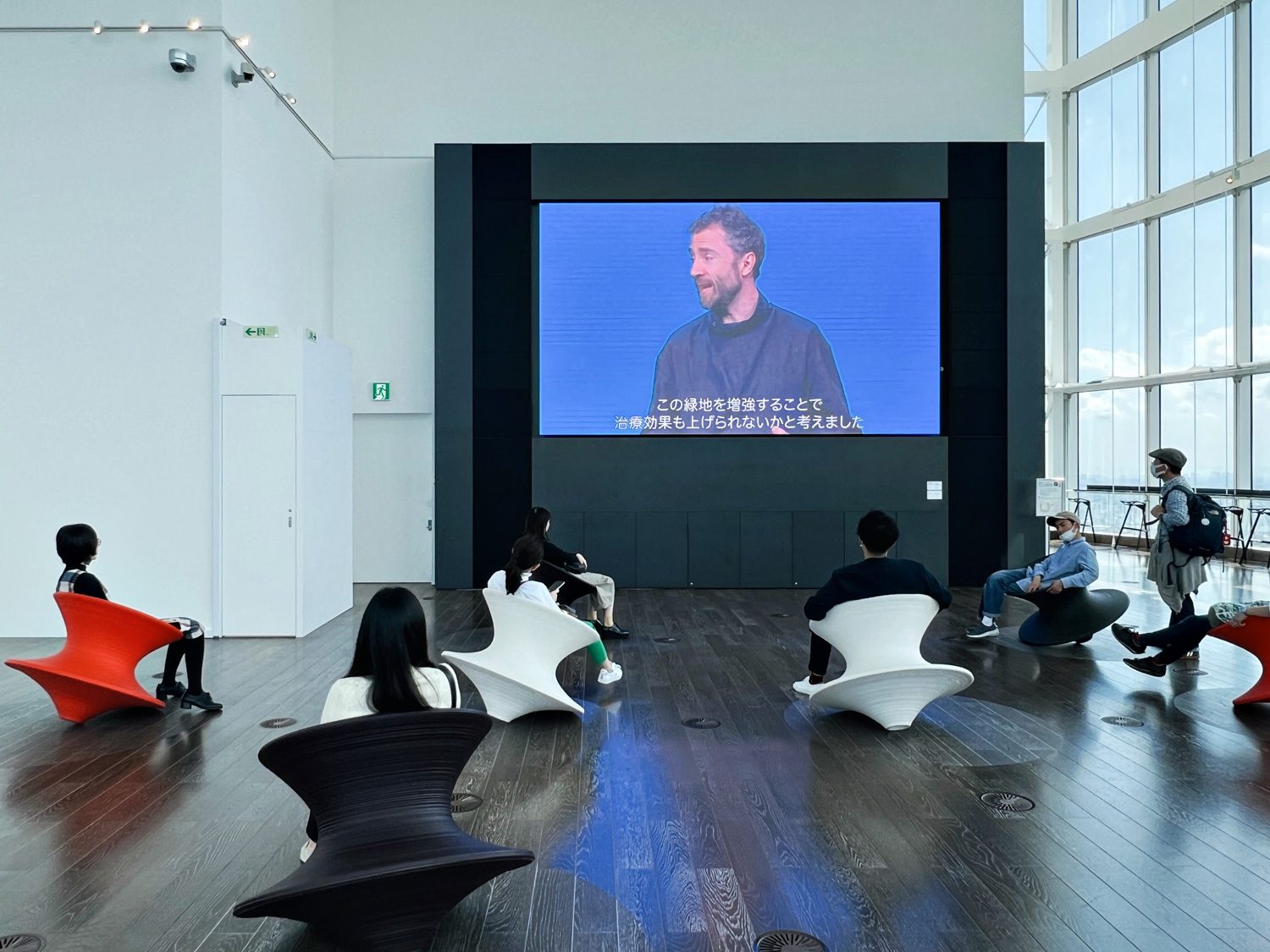
The exhibition feels to us like a detour from the media’s portrayal of Heatherwick Studio’s spectacular visuals and innovative use of construction techniques and materials. It chooses to tell the story of the studio in a more profound and philosophical manner, focusing on their intention to create “living buildings” for the purpose of introducing the stories of their other works. Considering the exhibition’s predominantly Japanese audience, the approach seems to be effective in allowing the exhibition to tell design stories through multiple facets of the human-locality relationship. Visitors to the exhibition will have a great time exploring the various dimensions of Heatherwick Studio’s works as they eagerly anticipate the imminent launch of the studio’s debut project in Tokyo.
The exhibition Heatherwick Studio: Building Soulfulness is now showing at Mori Art Museum from March 17th, 2023, to June 4th, 2023.

